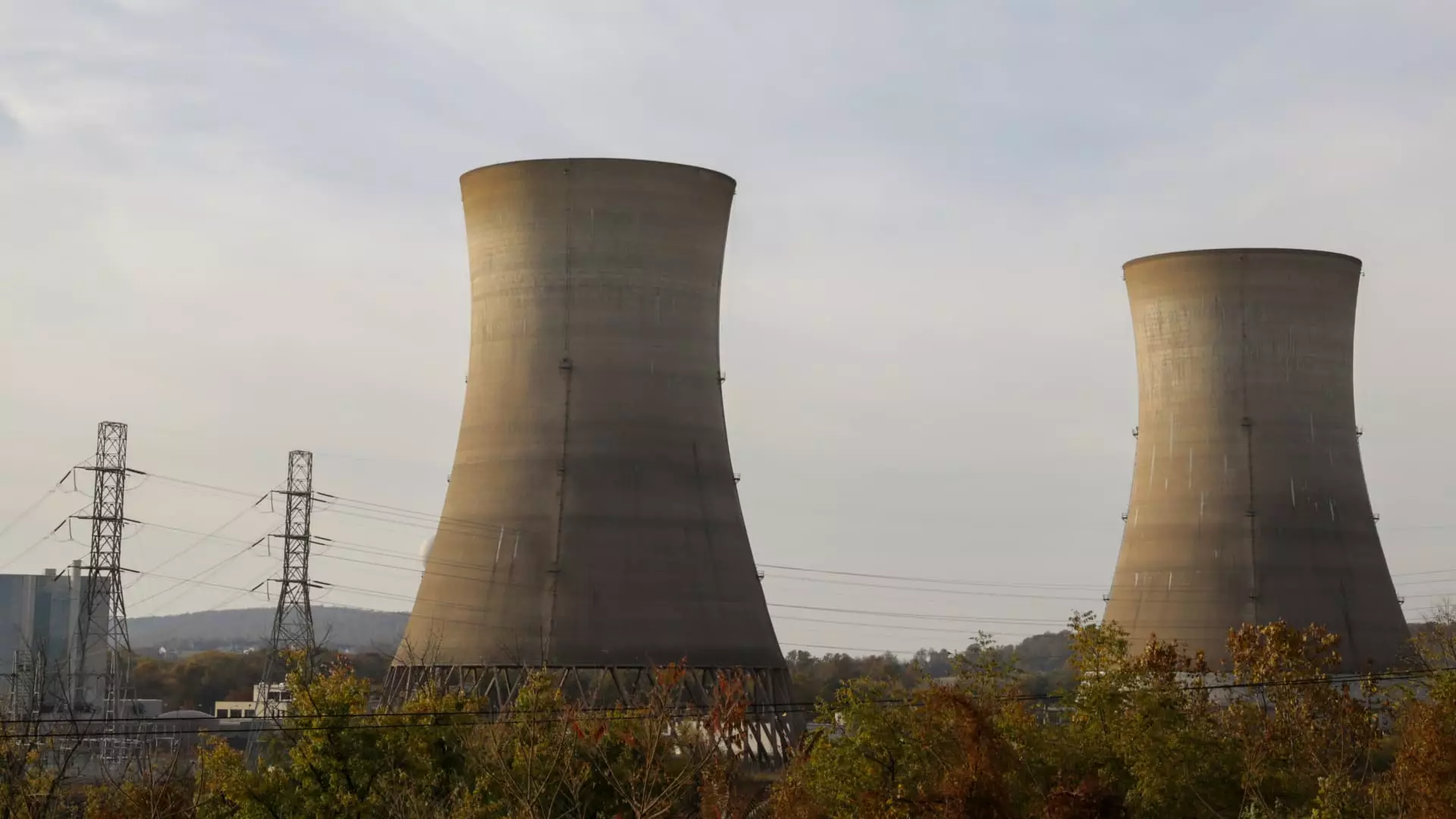The landscape of global energy production is undergoing a revolutionary transformation, driven by an insatiable demand for reliable power sources. At the forefront of this evolution is uranium—a resource that, despite past controversies surrounding nuclear energy, is re-emerging as a beacon of hope amid escalating energy crises. As we navigate complex challenges from climate change to geopolitical tensions, the renewed embrace of uranium marks a pivotal moment in our quest for sustainable energy solutions.
John Ciampaglia, CEO of Sprott Asset Management, has aptly noted the significance of this shift, emphasizing that nuclear energy offers a reliable, low-carbon alternative to fossil fuels. The urgency is clear: as tech giants expand their artificial intelligence capabilities, they are faced with the daunting requirement for an uninterrupted power supply. The widening chasm between energy supply and demand signals a momentous opportunity for uranium, which has proved itself as an energy-dense resource—far more efficient than its traditional counterparts.
The Economic and Environmental Appeal of Uranium
The advantages of uranium extend beyond mere efficiency. With its zero greenhouse gas emissions, nuclear energy has emerged as a key player in the fight against climate change. In a world desperate for solutions, nuclear power offers the promise of abundant electricity that is both sustainable and scalable. Ciampaglia’s assertion that “every country around the world has flipped back to nuclear power” except for Germany underscores a shifting global consensus. The catastrophic events of the past few years—most notably the energy crisis in Europe following Russia’s oil supply cut and subsequent blackouts in Spain and Portugal—have accentuated the urgent necessity for energy security.
What’s more, the rise of nuclear energy is aligning with the broader goals of environmental stewardship. As nations grapple with their carbon footprints, the efficient harnessing of uranium empowers them to transition away from fossil fuels while meeting their growing energy demands. There’s a palpable sense of optimism, as seen in the robust performance of ETFs like the Sprott Uranium Miners ETF, which has surged nearly 38%—a testament to the burgeoning investor confidence in this once-maligned energy sector.
The Setbacks and Long-Term Perspective
However, amidst the rising tide of confidence lies a sobering reality: the process of developing new nuclear infrastructure is unavoidably protracted. VanEck CEO Jan van Eck aptly articulated this concern when he remarked, “What’s going to happen in the meantime?” This question encapsulates the predicament investors face—how to maintain their enthusiasm for nuclear power while wrestling with the existential risks of waiting for years-long construction timelines to materialize into operational energy facilities.
Moreover, the prevailing sentiment toward nuclear energy remains a checkerboard pattern across political landscapes, heavily influenced by shifting administrations. The recent pro-nuclear initiatives sanctioned by the Trump administration—including executive orders aimed at expediting reactor development—have created a fleeting atmosphere of optimism. However, such political volatility raises critical questions about the long-term stability and predictability of nuclear energy policies.
It is imperative that investors and proponents of nuclear energy remain vigilant against these fluctuations. A genuine commitment to enhancing nuclear infrastructure, birthed from bipartisan support and a comprehensive understanding of its potential, is vital.
The Broader Implications for Society
Ultimately, the nuclear renaissance is not merely an economic narrative; it’s emblematic of a broader societal reawakening. As communities become increasingly aware of the potential benefits of nuclear energy, they must confront the intricacies of public perception, safety concerns, and the necessary infrastructural investments that accompany it. Nuclear power offers a pathway toward a sustainable energy future, but it requires a collective vigilance—a commitment to overcoming historical biases and educating the public on the core benefits of nuclear technology.
As we stand at the crossroads of energy production and consumption, it’s our responsibility as informed citizens to engage in the discourse surrounding uranium and nuclear energy. The stakes have never been higher. Embracing this dialogue could yield profound benefits for future generations, potentially positioning nuclear energy as a cornerstone of our collective push towards a cleaner and more resilient energy landscape. The future may very well depend on our willingness to learn from the past while daring to embrace the promise of the nuclear age.

